jefferson
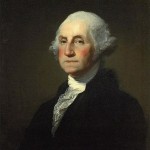
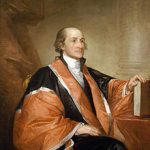 After the Revolutionary War, and the United States independence that followed, the relationship between the two nations was quite strained. The United States did not like having British military posts on our northern and western borders, and Britain’s violation of American neutrality in 1794 when the Royal Navy seized American ships in the West Indies during England’s war with France. Finally, in an attempt to smooth things over, Supreme Court Chief Justice John Jay, who was appointed by President Washington, came up with a treaty. The treaty officially known as the “Treaty of Amity Commerce and Navigation, between His Britannic Majesty; and The United States of America” was signed by Britain’s King George III on November 19, 1794 in London. However, after Jay returned home with news of the treaty’s signing, President Washington, who was now in his second term, had encountered fierce Congressional opposition to the treaty. By 1795, its ratification was still uncertain, and there was work to be done to change things.
After the Revolutionary War, and the United States independence that followed, the relationship between the two nations was quite strained. The United States did not like having British military posts on our northern and western borders, and Britain’s violation of American neutrality in 1794 when the Royal Navy seized American ships in the West Indies during England’s war with France. Finally, in an attempt to smooth things over, Supreme Court Chief Justice John Jay, who was appointed by President Washington, came up with a treaty. The treaty officially known as the “Treaty of Amity Commerce and Navigation, between His Britannic Majesty; and The United States of America” was signed by Britain’s King George III on November 19, 1794 in London. However, after Jay returned home with news of the treaty’s signing, President Washington, who was now in his second term, had encountered fierce Congressional opposition to the treaty. By 1795, its ratification was still uncertain, and there was work to be done to change things.
The two biggest opponents to the treaty were two future presidents…Thomas Jefferson and James Madison. Jefferson was, at the time, in between political positions. He had just completed a term as Washington’s secretary of state from 1789 to 1793 and had not yet become John Adams’ vice president. Fellow Virginian, James Madison was a member of the House of Representatives. Jefferson, Madison and other opponents feared the treaty gave too many concessions to the British. They argued that Jay’s negotiations actually weakened American trade rights and complained that it committed the United States to paying pre-revolutionary debts to English merchants. Washington himself was not completely satisfied with the treaty, but considered preventing another war with America’s former colonial master a priority.
The treaty was finally approved by Congress on August 14, 1795, with exactly the two-thirds majority it needed 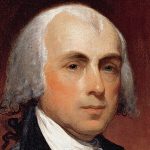
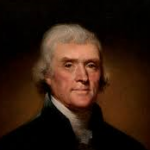 to pass. President Washington signed the treaty just four days later, on August 18, 1795. Washington and Jay may have won the legislative battle and averted war temporarily, but it created a conflict at home that highlighted a deepening division between those of different political ideologies in Washington DC, much like what we see these days. Jefferson and Madison mistrusted Washington’s attachment to maintaining friendly relations with England over revolutionary France, who would have welcomed the United States as a partner in an expanded war against England.
to pass. President Washington signed the treaty just four days later, on August 18, 1795. Washington and Jay may have won the legislative battle and averted war temporarily, but it created a conflict at home that highlighted a deepening division between those of different political ideologies in Washington DC, much like what we see these days. Jefferson and Madison mistrusted Washington’s attachment to maintaining friendly relations with England over revolutionary France, who would have welcomed the United States as a partner in an expanded war against England.
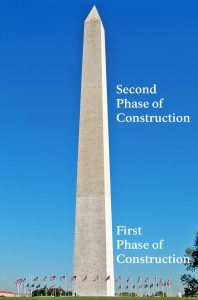 I think that anyone who has seen pictures of Washington DC, knows about the monuments that are there. One of those monuments, dedicated to our first president is quite unique in its design…the Washington Monument. The Washington monument was completed on December 6, 1884 when the capstone was set in place, but was not dedicated until February 21, 1885 and didn’t officially open until October 9, 1888. In the six months following the dedication ceremony, over 10,000 people climbed the nearly 900 steps to the top of the Washington Monument. Today, an elevator makes the trip far easier, and more than 800,000 people visit the monument each year. Upon its completion, it became the world’s tallest building…at that time anyway…standing 554 feet 7 11/32 inches, and is made of some 36,000 blocks of marble and granite. A city law passed in 1910 restricted the height of new buildings to ensure that the monument will remain the tallest structure in Washington, DC…a fitting tribute to the man known as the “Father of His Country.”
I think that anyone who has seen pictures of Washington DC, knows about the monuments that are there. One of those monuments, dedicated to our first president is quite unique in its design…the Washington Monument. The Washington monument was completed on December 6, 1884 when the capstone was set in place, but was not dedicated until February 21, 1885 and didn’t officially open until October 9, 1888. In the six months following the dedication ceremony, over 10,000 people climbed the nearly 900 steps to the top of the Washington Monument. Today, an elevator makes the trip far easier, and more than 800,000 people visit the monument each year. Upon its completion, it became the world’s tallest building…at that time anyway…standing 554 feet 7 11/32 inches, and is made of some 36,000 blocks of marble and granite. A city law passed in 1910 restricted the height of new buildings to ensure that the monument will remain the tallest structure in Washington, DC…a fitting tribute to the man known as the “Father of His Country.”
The Washington Monument is an obelisk on the National Mall. First conceived in 1832, the Washington Monument took decades to build. By law, it is the tallest structure in the District of Columbia, and is twice as tall as any other obelisk in the world. Among memorials in Washington, it is unique. Whereas people visit 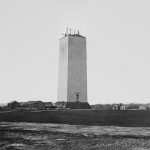 memorials to Lincoln and Jefferson to see giant statues of the men they commemorate, the highlight of the Washington Monument, is the monument itself. The smaller statue of Washington that sits inside the monument almost goes unnoticed. As John Steele Gordon wrote in his book, Washington’s Monument and the Fascinating History of the Obelisk, “The obelisk, silent as only stone can be, nonetheless seems to say as nothing else can, ‘Here is something significant.’”
memorials to Lincoln and Jefferson to see giant statues of the men they commemorate, the highlight of the Washington Monument, is the monument itself. The smaller statue of Washington that sits inside the monument almost goes unnoticed. As John Steele Gordon wrote in his book, Washington’s Monument and the Fascinating History of the Obelisk, “The obelisk, silent as only stone can be, nonetheless seems to say as nothing else can, ‘Here is something significant.’”
The monument’s construction began in 1848, but was halted from 1854 to 1877 due to a lack of funds, a struggle for control over the Washington National Monument Society, and the intervention of the American Civil War. The stone structure was finally completed in 1884, but internal ironwork, the knoll, and other finishing touches were not completed until 1888. A difference in shading of the marble, visible approximately 150 feet or 27% of the way up, shows where construction was halted and later resumed with marble from a different source. The original design was by Robert Mills, but he did not include his proposed colonnade due to a lack of funds, proceeding only with a bare obelisk. Despite many proposals to embellish the obelisk, only its original 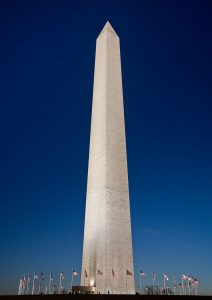 flat top was altered to a pointed marble pyramidion, in 1884.
flat top was altered to a pointed marble pyramidion, in 1884.
Anytime a structure is made of stone, you can expect that while it is very strong for the most part, things like tornadoes, earthquakes, and hurricanes can cause significant damage. Washington Monument was damaged during the 2011 Virginia earthquake and Hurricane Irene in the same year and had to be closed to the public while the structure was assessed and repaired. After 32 months of repairs, the National Park Service and the Trust for the National Mall reopened the Washington Monument to visitors on May 12, 2014. Then, as of September 2016, the monument had to be closed indefinitely due to reliability issues with the current elevator system. On December 2, 2016, the National Park Service announced that the monument would be closed until 2019 in order to modernize the elevator. The project is expected to run as much as $3 million to complete.

 Over the years, my family and I have spent many vacations and weekend trips, especially the 4th of July, in the Black Hills of South Dakota. We love the area, and it’s close enough to home to get there even for a three day weekend. Bob and I mostly love to hike the many trails there, as opposed to the tourist attractions, since we have been there many times. Nevertheless, there are a few places that we usually go and things we usually do, like the 1880 Train, Keystone, and of course, Mount Rushmore. Being patriots, Bob and I are very much impressed by the carvings on Mount Rushmore. I think most people know that four United States Presidents, who were instrumental in making this country great, are carved in the granite face of the mountain. If you go there, you will see, President George Washington, President Thomas Jefferson, President Theodore Roosevelt, and President Abraham Lincoln, looking out across the land, making a majestic tribute to these men and to our nation as a whole. These four presidents were chosen because they represent the first 130 years of American history well. These presidents were selected by Borglum because of their role in preserving the Republic and expanding its territory. I can’t go there, or even drive by the monument, without feeling a deep sense of pride
Over the years, my family and I have spent many vacations and weekend trips, especially the 4th of July, in the Black Hills of South Dakota. We love the area, and it’s close enough to home to get there even for a three day weekend. Bob and I mostly love to hike the many trails there, as opposed to the tourist attractions, since we have been there many times. Nevertheless, there are a few places that we usually go and things we usually do, like the 1880 Train, Keystone, and of course, Mount Rushmore. Being patriots, Bob and I are very much impressed by the carvings on Mount Rushmore. I think most people know that four United States Presidents, who were instrumental in making this country great, are carved in the granite face of the mountain. If you go there, you will see, President George Washington, President Thomas Jefferson, President Theodore Roosevelt, and President Abraham Lincoln, looking out across the land, making a majestic tribute to these men and to our nation as a whole. These four presidents were chosen because they represent the first 130 years of American history well. These presidents were selected by Borglum because of their role in preserving the Republic and expanding its territory. I can’t go there, or even drive by the monument, without feeling a deep sense of pride 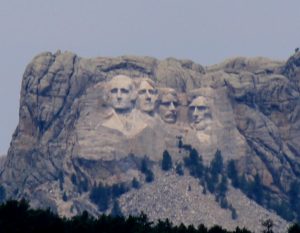 and awe. It’s almost like you can feel history when you are there.
and awe. It’s almost like you can feel history when you are there.
On March 5, 1925, the Governor of South Dakota, Carl Gunderson signed the Mount Harney bill, which would allow the carving of a monument in Custer State Park. The mountain was chosen as the sight for the carvings by Gutzon Borglum, the artist in charge of the project, and really the visionary of what it would become. It was dedicated on October 1, 1925, as the sight for the carving that South Dakota state historian Doane Robinson first dreamed of seeing in the Black Hills, back in 1923. On October 7, 1927, the actual carving began. The project took 14 years and 400 men to complete the carving of the mountain. The conditions were harsh and dangerous, yet no one died during the project. Over 90% of Mount Rushmore was carved using dynamite. That is probably one of the facts about Rushmore that most people find most intriguing. The blasts removed approximately 450,000 tons of rock. If you walk on the President’s Trail, you can still see the drill marks used for the dynamite. The fine details were finished with jackhammers and hand chisels. It really isn’t what you would have expected at all.
George Washington was dedicated on July 4, 1930. Then work began on Thomas Jefferson, but many people thought it was Martha Washington for a time…a drawback of an artists work being done so much in the 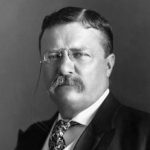
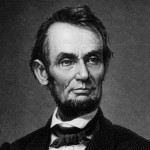 public eye. Thomas Jefferson was dedicated on August 30, 1936. Abraham Lincoln was dedicated on this day, September 17, 1937, and Theodore Roosevelt was dedicated on July 2, 1939. The Hall of Records was never finished because of dangerous working conditions. Gutzon Borglum died suddenly on March 6, 1942, and the work on the mountain was finished by his son, Lincoln Borglum. With the onset of the US involvement in World War II, the mountain was declared complete on October 31, 1941. So ended the work on the mountain, and I really never get tired of hearing the story.
public eye. Thomas Jefferson was dedicated on August 30, 1936. Abraham Lincoln was dedicated on this day, September 17, 1937, and Theodore Roosevelt was dedicated on July 2, 1939. The Hall of Records was never finished because of dangerous working conditions. Gutzon Borglum died suddenly on March 6, 1942, and the work on the mountain was finished by his son, Lincoln Borglum. With the onset of the US involvement in World War II, the mountain was declared complete on October 31, 1941. So ended the work on the mountain, and I really never get tired of hearing the story.
 For me, there is no more perfect way to celebrate Independence Day that to come to the Black Hills of South Dakota. I can’t think of a more patriotic place that is close enough to my home in Wyoming to be able to go to each year. The Black Hills is a shrine to patriotism. Mount Rushmore…home to the faces of four presidents, George Washington, Thomas Jefferson, Theodore Roosevelt, and Abraham Lincoln…brings home that spirit of patriotism that lives inside me. I love going to Mount Rushmore, and every time I go, I feel a sense of awe. These great men did the things necessary to make our country great. We don’t often think about the sacrifice a president made, but George Washington was a great soldier before he was president. He, along with the help of an ancestor of my husband, Bob’s, Henry Knox worked out a strategy to win the Revolutionary War, thereby winning our independence. Thomas Jefferson was the author of the Declaration of Independence. Abraham Lincoln was the
For me, there is no more perfect way to celebrate Independence Day that to come to the Black Hills of South Dakota. I can’t think of a more patriotic place that is close enough to my home in Wyoming to be able to go to each year. The Black Hills is a shrine to patriotism. Mount Rushmore…home to the faces of four presidents, George Washington, Thomas Jefferson, Theodore Roosevelt, and Abraham Lincoln…brings home that spirit of patriotism that lives inside me. I love going to Mount Rushmore, and every time I go, I feel a sense of awe. These great men did the things necessary to make our country great. We don’t often think about the sacrifice a president made, but George Washington was a great soldier before he was president. He, along with the help of an ancestor of my husband, Bob’s, Henry Knox worked out a strategy to win the Revolutionary War, thereby winning our independence. Thomas Jefferson was the author of the Declaration of Independence. Abraham Lincoln was the  man responsible for ending slavery in the United States, and Teddy Roosevelt was chosen because of his contributions to business, conservation and the creation of the Panama Canal. These were four men who saw just how great this nation could be, and who worked to make sure that it always would be a great Constitutional Republic.
man responsible for ending slavery in the United States, and Teddy Roosevelt was chosen because of his contributions to business, conservation and the creation of the Panama Canal. These were four men who saw just how great this nation could be, and who worked to make sure that it always would be a great Constitutional Republic.
For most of us, the Independence Day celebration would not be complete without a grand fireworks display. I have been to a lot of fireworks displays in my lifetime, but few can match the display that takes place every year in Custer, South Dakota. They start by doing the roll call of the states. I have been amazed over the years that almost every state is represented. Then the fireworks begin, with synchronized music, that is the best mix I have ever heard. Of course, every patriotic song in existence is sung, and the display seems to go on for hours. By the time the evening is over, you truly feel like you have celebrated our nation’s birth. I always walk away feeling more patriotic than when I arrived…if that’s possible.
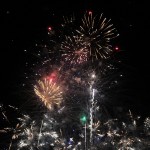
I believe that the United States of America is one of the greatest countries on earth, and in the past few years, people have been trying to tear it down, and make us believe that we are not a great nation with great people. I don’t like that. I don’t like that our government tries to take away our rights, and tries to change the fabric of this nation into a nation of whiney babies that I hardly recognize. I hate to make Independence Day a story about the election, but it’s time to “Make America Great Again.” It’s time to fight for our Constitution, and the freedoms it provides. If we don’t fight for those rights now, they will be gone forever, and with them would go the nation we love. I pray that you all have a very safe and happy Independence Day!!

